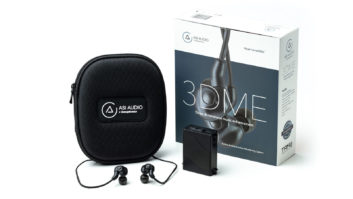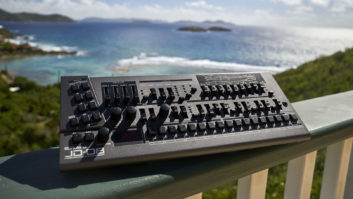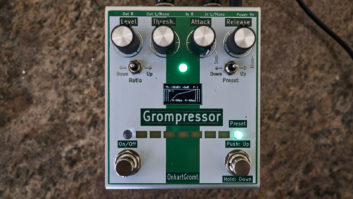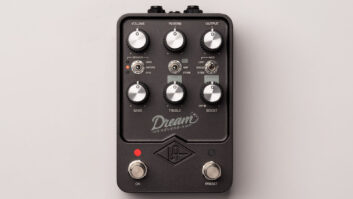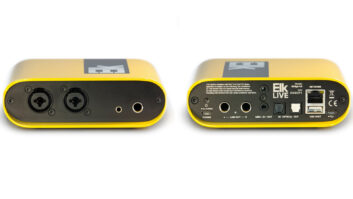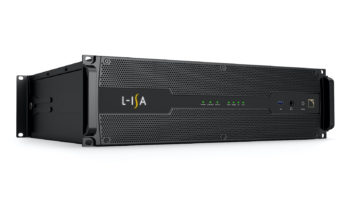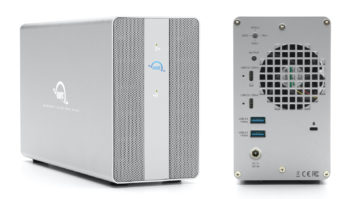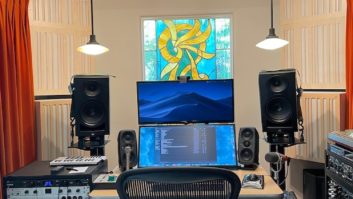
| MIX VERDICT |
| “Saturator is the clear standout because it is so unique and will potentially have the greatest impact on your mixes.” |
| COMPANY: PSPaudioware PRODUCT: PSP Saturator and PSP Impressor WEBSITE: PSPaudioware.com PRICE: PSP Saturator, $99; PSP Impressor, $99 PROS: • PSP Saturator’s tube- and (especially) tape-emulation algorithms sound dynamite. • PSP Impressor sounds ultra-smooth on full mixes and individual tracks, and is feature-rich, including an outstanding limiter. • Low-cost. CONS: • PSP Impressor isn’t an effective deesser or fast enough to produce FET-style compression on drums. • Both plug-ins are a little buggy. |
At the dawn of the Plug-in Age—if you’ll forgive my coining an epoch just for we engineers — PSPaudioware was one of the first developers to produce a convincing emulation of the sonics produced by vacuum tubes. Two decades later, the company’s new PSP Saturator plug-in lets you drive virtual tubes and diodes, a digital clipper and—best of all—simulations of magnetic tape and tape recorder responses that are so realistic you’ll be wondering where they hid the metal reels.
But it gets even better. Place the Saturator in series with the new super-smooth PSP Impressor dynamics plug-in, and you have a killer combo for making individual tracks and full mixes sound huge without blowing them up.
Walking both plug-ins up to the bleeding edge, I tested the Apple Silicon-compatible AU versions in my M1 Max-loaded Mac Studio running macOS Monterey 12.4 and the M1/Monterey-ready Digital Performer 11.1.
PSP SATURATOR
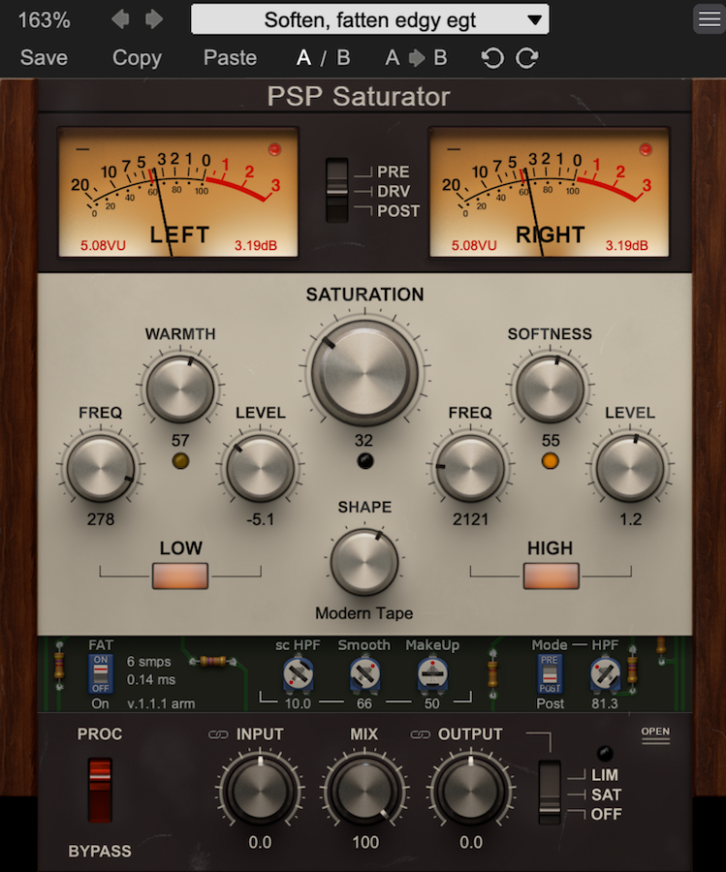 PSP Saturator emulates our fave analog circuits by using three independently operating (and separately bypassable) algorithms. As you finesse three rotary controls in the left-center of the plug-in, low-frequency processing adds bass harmonics and the iconic LF “head bump” produced by analog tape recorders. Jockeying three controls in the GUI’s right-center section processes high frequencies to emulate—with high input-signal levels applied—analog tape’s characteristic compression and related high-frequency loss, but without increasing the level of distortion and aliasing.
PSP Saturator emulates our fave analog circuits by using three independently operating (and separately bypassable) algorithms. As you finesse three rotary controls in the left-center of the plug-in, low-frequency processing adds bass harmonics and the iconic LF “head bump” produced by analog tape recorders. Jockeying three controls in the GUI’s right-center section processes high frequencies to emulate—with high input-signal levels applied—analog tape’s characteristic compression and related high-frequency loss, but without increasing the level of distortion and aliasing.
Distortion is the domain of the main saturation algorithm, which provides eight choices of nonlinearity curves to apply using two controls—Saturation and Shape—at the GUI’s dead-center to gently sweeten or crush your tracks.
Here’s how to work with Saturator: You activate controls for LF processing by clicking the Low button to light it. Then adjust the Freq control between 20 and 400 Hz to set the frequency below which the algorithm applies processing. Turn up the Warmth control to increase the head-bump effect (increasing some unspecified low frequencies while attenuating others); the virtual LED below the control illuminates yellow to orange to red as processing depth increases, determined by your Level control’s setting. “0.0,” the noon o’clock position, is the recommended starting point for Level adjustments.
Most of the controls for high-frequency processing are analogous to those for the LF processing. Illuminate the High switch to activate the algorithm, then adjust the Freq control to set the cutoff (adjustable from 1 to 20 kHz) above which processing takes place at the depth determined by your Level setting. A separate virtual LED lights, as in the LF-processing control section, to guide your hand. The Softness control is unique; crank it clockwise to increase soft-knee compression of high frequencies, just like analog tape would impart.
At the center of the GUI, you can rotate the Shape control to switch among eight different saturation curves (or “None,” which bypasses the main saturator): Soft, Medium and Hard Valves (emulated tube circuits); Warm (vintage) and Modern Tape; Soft Clip (clipping like a driven diode would impart); Hard Clip (as overloaded AD converters sound); and a “Ram” saturation curve in the shape of a ram’s horn. (Yeah, I had to Google “ram image” to fully conjure that one.)
Crank the Saturation control clockwise to drive your selected saturation algorithm harder. There’s a separate virtual LED to inform you if you’re ramming the saturation algorithm too hard (pun, unfortunately, intended).
A phase-compensated Mix control lets you adjust the balance of dry and processed signals before the inconspicuously important Output control. Cranking the latter, you can drive a downstream soft-knee limiter or soft-clip saturator—each with a ceiling level fixed at 0 dBFS, and together bypassable—that can make a huge difference in the plug-in’s sound.
Opening a hidden control panel reveals a sidechain highpass filter (HPF) that affects what frequencies are dealt overall saturation. Also accessed there are pre- and/or post-processing HPFs in the audio path, “FAT” 4x-oversampling, and a smoothing effect for the saturator (reducing aliasing).
PSP IMPRESSOR
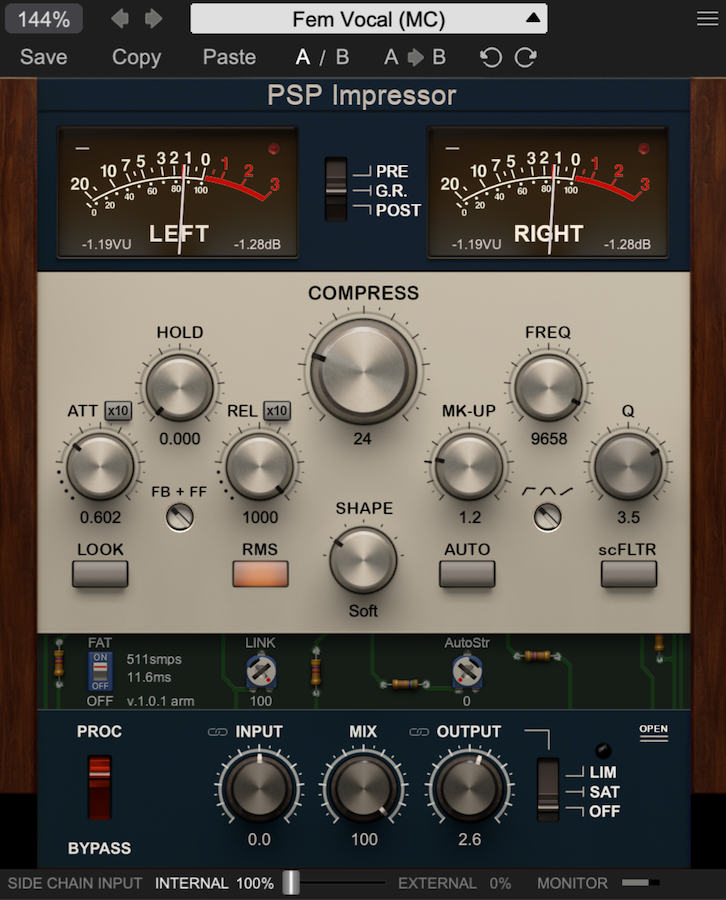 A glance at PSP Impressor’s GUI only gives you a hint of the plugin’s power as a compressor, its raison d’ tre. (A separate saturator and brick-wall limiter, both with fixed threshold and 0dbFS ceiling, are also included.) By rotating the bypassable compressor’s Shape control clockwise, you can select among six progressively harder compression curves: Soft, Wide, Medium, Short, Sharp or Hard. In practical terms, these run the gamut from extremely gentle, mastering-style knees and ratios to soft- and hard-knee limiters; toggling RMS and peak-detection modes (limiters by definition use the latter) further refines those behaviors.
A glance at PSP Impressor’s GUI only gives you a hint of the plugin’s power as a compressor, its raison d’ tre. (A separate saturator and brick-wall limiter, both with fixed threshold and 0dbFS ceiling, are also included.) By rotating the bypassable compressor’s Shape control clockwise, you can select among six progressively harder compression curves: Soft, Wide, Medium, Short, Sharp or Hard. In practical terms, these run the gamut from extremely gentle, mastering-style knees and ratios to soft- and hard-knee limiters; toggling RMS and peak-detection modes (limiters by definition use the latter) further refines those behaviors.
Select a feedback, feed-forward or combination design for the level detector to metamorphose the compressor’s sound from warm (like an opto-electronic compressor) to transparent (like a VCA-based one), or a mix of both. Attack and release parameters have both wide-ranging manual controls—including time multipliers— and different auto settings. Adjust the Hold control to maintain compression for up to 1 second in the absence of new peaks above threshold, and engage Look(-ahead) mode to nip any peaks in the bud.
Internal sidechain filters include highpass, bell and equal-power types (with separately adjustable frequency and Q controls for the bell, and adjustable corner frequency for the HPF). The filters can also be applied to an external sidechain input, and you can mix internal and external sidechain signals in any ratio.
A sidechain-listen function allows you to hear the signal that’s conditioning the detector as you work. Use manual or auto-makeup gain to optimize the output level as you wish, and the continuously variable Mix control for parallel-compression effects. A hidden panel includes controls for implementing “FAT” 16x-oversampling and other helpful goodies.
PSP Saturator and PSP Impressor both take I/O VU metering to a sophisticated level. Not only can you adjust the 0VU reference level in dbFS (arguably de rigueur), each meter can also show up to three levels at once—VU input, VU output and peak—by means of as many color-coded and shaded needles. VU and peak levels are shown at once in peak-hold numerical readouts that turn red—along with associated virtual LEDs—to alert you if you’re risking crashand- burn output.
I encountered a few bugs common to both plug-ins. The most serious, because it wasn’t always obvious, was that they didn’t save their “FAT” oversampling activations after a session was closed. The plug-ins would also sometimes open inside a much larger blank window with all controls temporarily rendered inoperable. And the names for my custom presets would often revert (in the GUI’s main display, not the Finder) to those for other presets I used as a starting point in fashioning my own.
SERIAL KILLERS
I loved using both plug-ins in series, usually with Impressor first in line. That way, I could brake the levels of both dry signal and generated harmonics at once.
Impressor was extremely effective at taming a Nashville player’s overly bright electric guitar track, playing arpeggios like stabbing knives. Setting the plug-in for the fastest auto-attack setting, peak-level detection and a Wide (fairly gentle) knee, and—most important—using the equal-power internal sidechain filter, the brittle transients were smoothed beautifully without ruining the underlying dynamics.
Following Impressor with Saturator made the track sound better still: Adding lowfrequency (“head-bump”) processing below 278 Hz gave the track much-needed body, and the Modern Tape algorithm, along with highfrequency processing (compression) above 2.1 kHz, smoothed the digital track like it had been recorded to tape. Fantastic!
The same plug-in combination totally transformed an electric bass guitar track. This time, I bypassed Impressor’s compressor section and cranked its Input control to drive the activated limiter stage slightly to distortion. I then set up Saturator’s lowfrequency processor to deliver a hefty dose of simulated head bump below 70 Hz, and used its high-frequency processor to soften frequencies above 2.2 kHz. ’Scuse me, did someone print this track to 2-inch tape while I wasn’t looking?
PreSonus DM-7 Drum Mic Set – A Real-World Review
GIK Acoustics Sound Blocks – A Real-World Review
Slathering a kick drum track with Saturator’s low-frequency processing below 52 Hz yielded similarly amazing and analog-like results. I’d be very hard-pressed to find another plug-in that sounds so flattering on kick drum. Impressor did an excellent job smoothing vocal levels. Meanwhile, used in moderation, especially with 4x-oversampling engaged, Saturator’s Soft Valve algorithm sounded exquisitely beautiful on digitally recorded male and female vocals alike, imparting a subtle, analog-like fullness, warmth and richness to their sound.
Both plug-ins—employing a light touch—sounded absolutely terrific on full mixes, this time with Saturator placed before Impressor. Adding a little of Saturator’s head bump and Soft Valve processing made the mix sound bigger and sweeter, respectively. Impressor’s Soft knee and RMS settings compressed the mix transparently, and setting the sidechain’s HPF to around 100 Hz kept the bottom couple octaves sounding punchy and full.
Impressor and Saturator, again used in series, gave good results pumping up drum room mics’ ambience and punch, although not the best I’ve heard for this particular application. Impressor, using the fastest attack times, enhanced the snare drum’s stick hits slightly, and setting the internal sidechain’s HPF to 277 Hz lent beefier kick drum and tom-tom sounds. Slamming Saturator’s Hard Clip algorithm with high input gain, I then dialed back the Mix and Output gain. The result made the sound a bit more aggressive. Impressor was not an effective, or shall I say selective, de-esser.
Even choosing the hardest knee, and look-ahead and peak-level detection modes, the internal sidechain filter wasn’t powerful enough and the fastest attack time (0.10 ms) quick enough to deess sibilants without also compressing loud vowel sounds. Using a radically equalized external sidechain input didn’t work, either. In my experience, a compressor must have a minimum attack time of around 60 microseconds to transparently de-ess vocals.
But it’s also my experience that the best de-essers are plug-ins dedicated to that application. The main reason to buy Impressor is for its deft ability to transparently compress full mixes and a wide variety of non-percussive tracks—applications in which it excels— and not so much to pump up the attack or ambience on drums like you would with, for example, a UA 1176 FET compressor.
If you have only enough coin to buy one of the two plugins reviewed here, Saturator is the clear standout because it is so unique and will potentially have the greatest impact—even transformational—on your mixes. Its ability to fatten the low end, in particular, with analog beauty is par excellence and worth the price of admission alone.
